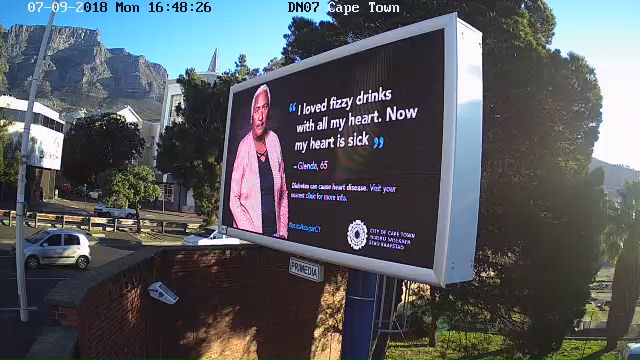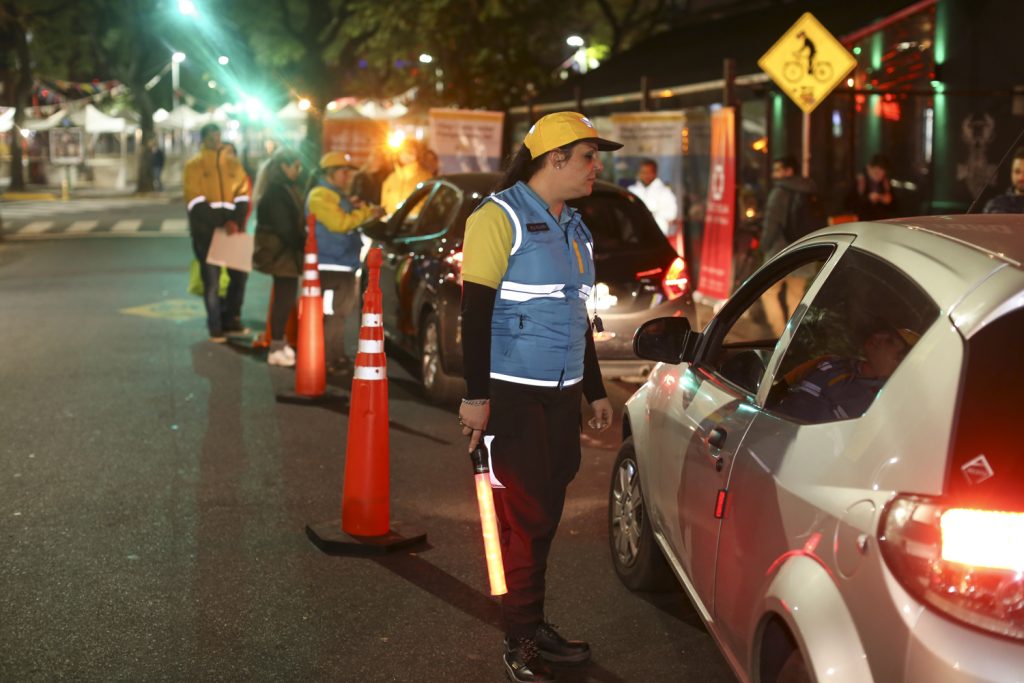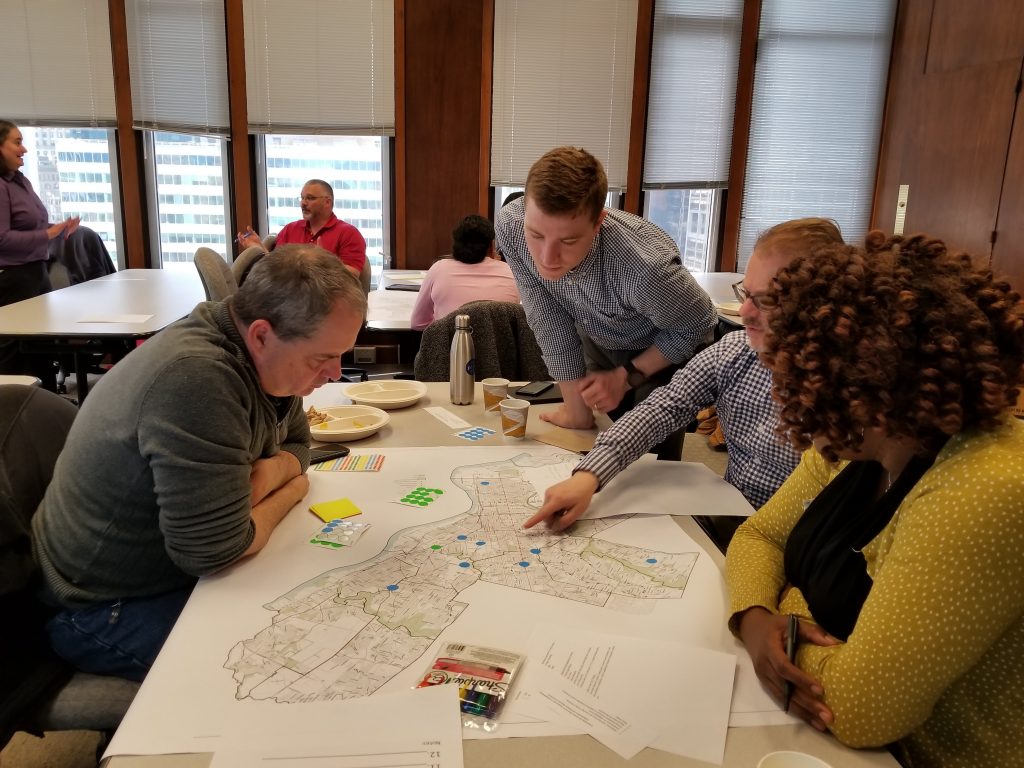In a world where more than half the population now lives in urban settings, cities are uniquely positioned to prevent noncommunicable diseases (NCDs) and injuries, and to be engines of change at the national level too.
That’s the story behind a series of public health interventions implemented in recent months by cities in the Partnership for Healthy Cities, a prestigious global network with the mission of preventing NCDs such as heart disease, cancer and diabetes, as well as road traffic injuries and fatalities. Combined, these are responsible for almost 80 percent of global deaths.
On World Cities Day today, we’re highlighting 10 of the Partnership’s 54 cities demonstrating the special role of mayors and other urban leaders in saving lives and protecting their citizens’ health
1. KAMPALA: Creating a smoke-free city

The capital city’s first-ever anti-smoking billboard campaign emphasizes the risks of secondhand smoke, especially to children and unborn babies.
Uganda already had a smoke-free law that was two years old when the capital city joined the Partnership in 2017, but enforcement was weak, and tobacco use stayed high, causing roughly 4% of deaths nationwide. An enforcement drive was the city’s first step, with police upping fines. Reaching the public with meaningful messages about the harms of smoking was the next challenge. A new Partnership-supported television campaign began airing in August, and billboards went up around the city as well, both with strong imagery about the dangers of secondhand smoke. Surveys before and after the campaign will measure the campaign’s effectiveness.
2. RIO DE JANEIRO: Banning tobacco advertising

Anti-tobacco educators at Rio de Janeiro’s Copacabana Beach reached out to the public on World No Tobacco Day this year.
Restrictions on smoking aren’t the only way to prevent tobacco-related NCDs. In 2011, Brazil banned point-of-sale tobacco advertising, amid strong evidence that ads placed where cigarettes are sold can be very influential. The tobacco industry has been able to circumvent this advertising ban by developing attention-grabbing product displays—some going so far as to make noise and flash lights—which are not technically ads as defined by the law. New federal restrictions followed earlier this year. Now Rio de Janeiro is working with the Partnership for Healthy Cities to enforce these rules. The city is also giving out expensive fines now for other tobacco-related violations such as smoking in bars, restaurants and other public places.
3. CAPE TOWN: Reducing sugary drink consumption

Cape Town’s billboard campaign helped clarify the connection between NCDs and the consumption of sugary drinks by using emotional first-hand testimonies; including from people who had lost limbs to diabetes or suffer from heart disease.
Research that Vital Strategies helped to support in South Africa shows that 83 percent of adults want their government to address the country’s obesity problem. Indeed, the national government recently imposed a tax on sugary drinks in an effort to address the problem, one of several risk factors for NCDs. Cape Town joined the Partnership for Healthy Cities to focus on connecting sugary drinks to NCDs. The first step was to reduce the accessibility of such beverages within City of Cape Town-controlled buildings. Next came an attention-grabbing media campaign that featured first-hand stories from residents of the city who were regular consumers of sugary drinks and now suffer extreme physical impairments caused by NCDs.
4. MONTEVIDEO: Reducing salt consumption
Because of the city’s work with the Partnership, new restaurant menu regulations came into force this month in Montevideo, Uruguay: now 10% of every restaurant menu must include no-salt-added options. Also, an educational video linking high salt consumption to cardiovascular disease is in circulation in clinics and other public spaces throughout the city, reaching an estimated 80,000 people. Montevideo is the only city in the Partnership for Healthy Cities to choose salt reduction as the focus of its intervention—and the initiative is just the latest in a string of policies in the city aimed at reducing sodium intake, including requirements that restaurants replace high-salt condiments on their tables with low-salt options.
5. BANGKOK: Reducing speeding

Through the Partnership, Bangkok has installed the city’s first-ever speed cameras at busy intersections to collect information about vehicle movements and other data to inform road safety policies.
Thailand’s roads are among the deadliest in the world, in part due to speeding.. Through the Partnership, Bangkok has installed 10 new speed cameras at three accident-prone areas of the city that will provide data about how different vehicles use the road and interact with each other and pedestrians. The initiative complements extensive Bangkok road safety work through the Bloomberg Philanthropies Initiative for Global Road Safety (BIGRS) such as campaigns to encourage helmet use and reduce drink driving.
6. ULAANBAATAR: Increasing the use of seat-belts

Ulaanbaatar’s Partnership communications campaign features a video in which the camera shows a family encountering a car crash first without and then with seat-belts fastened.
Enforcement of seat-belt laws and a powerful radio and TV campaign about the dangers of not buckling up are at the heart of Ulaanbaatar, Mongolia’s Partnership initiative. Through the Partnership, which is also supporting training of local traffic police, the city developed a video that involves a “rewind” scenario of the kind that has been very effective in other countries by showing how the outcome of a crash can be completely changed through the simple act of fastening your seat-belt. The campaign has been on the air for over two months; the city will gauge progress by comparing before-and-after surveys.
7. BUENOS AIRES: Reducing drink driving

The Partnership organized two international workshops in the Argentinian capital that included visits by city staff and international advisors to busy nighttime alcohol checkpoints.
In Buenos Aires, Argentina, approximately 20% of all fatal traffic crashes are alcohol-related, but research shows little public awareness of this problem. Through the Partnership and international experts enlisted for the project, the city is helping re-train traffic enforcement agents; increasing roadside checkpoints; and developing a communication campaign aimed at dispelling public perceptions that driving with a high blood alcohol content (BAC) is not dangerous and that road stops are unlikely.
8. SANTO DOMINGO: Creating walkable, bikeable streets

Santo Domingo Mayor David Collado (in stripes) cycled with staff along the city’s waterfront during one of the year’s Partnership workshops focused on making the city more “walkable and bikeable.”
In the Dominican Republic, the World Health Organization estimates 3,052 people die each year from road traffic crashes. Of these deaths, 21 percent are pedestrians and cyclists—the most vulnerable road users. At two international Partnership workshops this year in Santo Domingo, the urban mobility experts at the World Resources Institute (WRI) worked with the city to examine cycling, transport and crash injury data with an eye toward creating a safe space for cyclists and encouraging physical activity. The resulting Bicycle Action Plan, now in the works, will link current bike routes to waterfront paths and improve both commuting and recreation cycling in the Caribbean capital.
9. PARIS: Cleaning the air
In France, more than 16,000 deaths are attributed to air pollution every year. Paris joined the Partnership to help fight this problem, starting with data collection. The city is developing an air pollution monograph that will summarize the air quality in the capital, while also surveying residential buildings still using fuel oil to find out exactly how much this energy source is contributing to the problem. A citywide program encouraging conversion to natural gas or renewable energy is to follow, including information about exactly what such conversions will cost.
10. PHILADELPHIA: Monitoring NCD risk factors

The city held cross-sector workshops to plan the new pedestrian and bike count strategy and select locations for six permanent counters — three bicycle and three pedestrian — based on local rates of chronic conditions.
Philadelphia was already monitoring NCDs and their risk factors when the city joined the Partnership, but the system was not measuring physical activity—and the city’s method for collecting data was due for an update. Through the Partnership, the city has created a new system for routine monitoring of pedestrian and bike counts across the city and is expanding its annual community health survey to include physical activity. Routine reporting of the prevalence of obesity, diabetes, hypertension, asthma and smoking is now underway as well, with an eye toward informing future policy decisions.
About the Partnership for Healthy Cities:
The Partnership for Healthy Cities is a prestigious global network of cities committed to saving lives by preventing noncommunicable diseases (NCDs) and injuries. Supported by Bloomberg Philanthropies in partnership with WHO, as well as Vital Strategies, this initiative enables cities around the world to deliver a high-impact policy or programmatic intervention to reduce NCD risk factors in their communities. For more information, visit: https://partnershipforhealthycities.bloomberg.org/